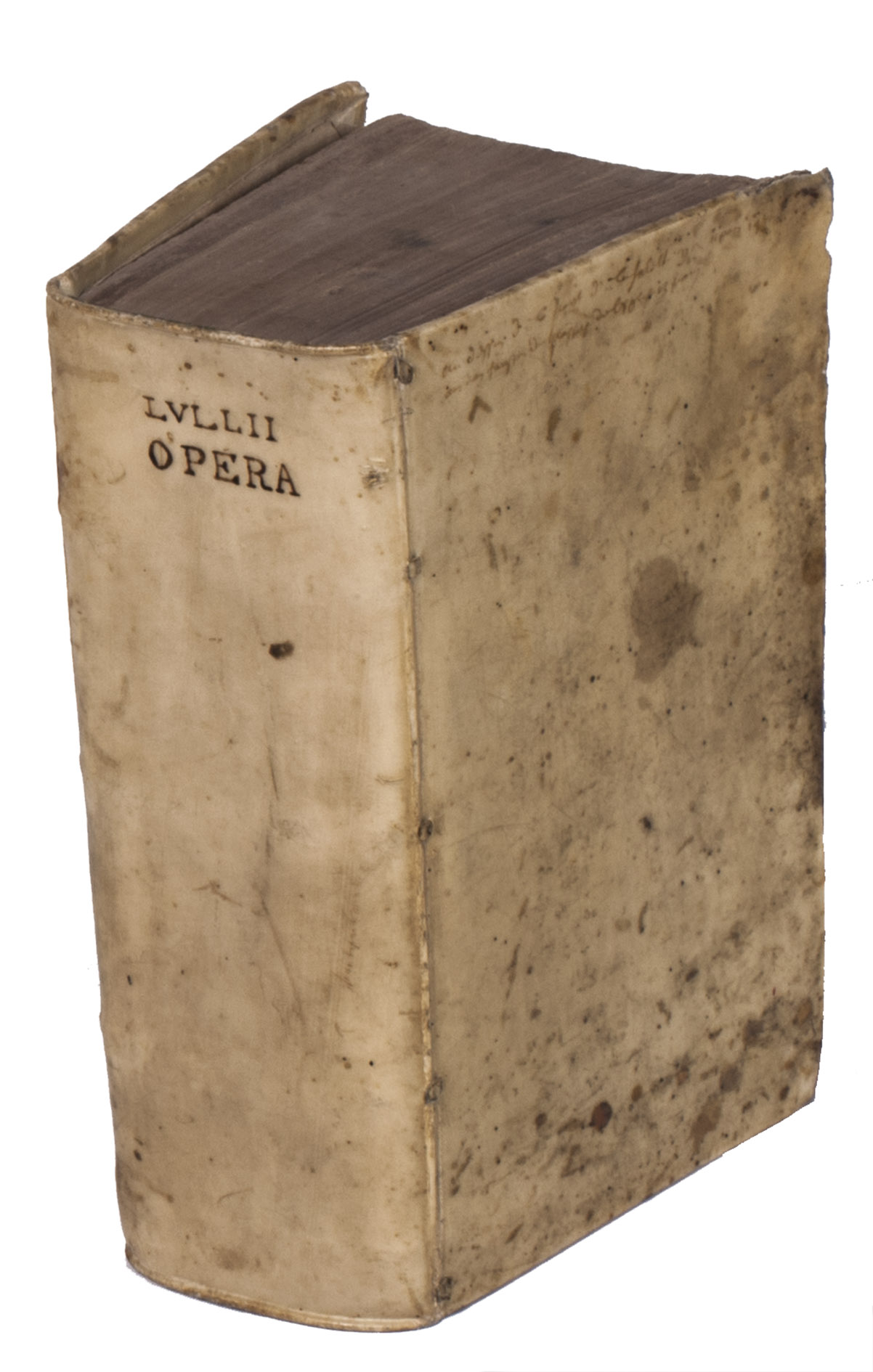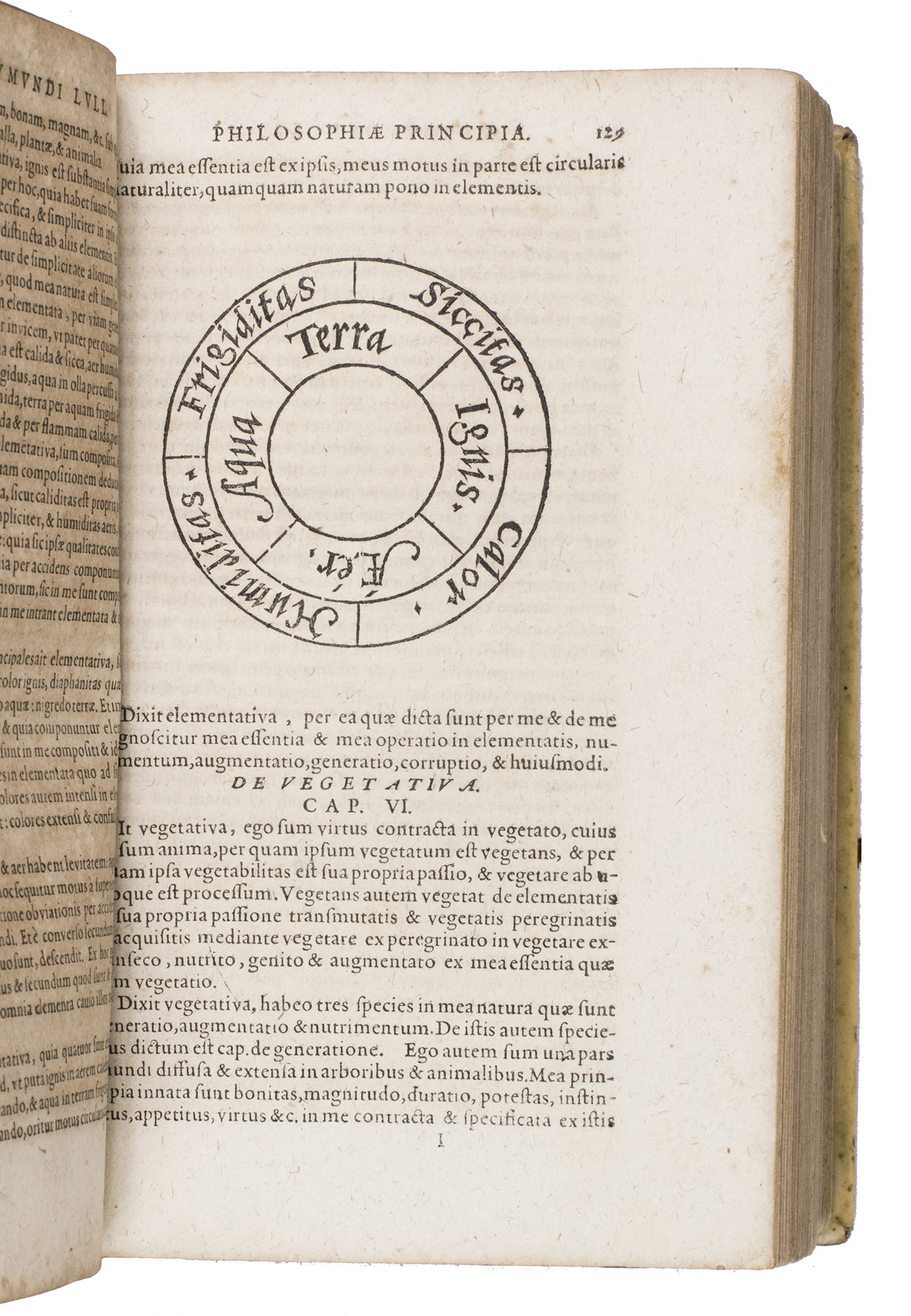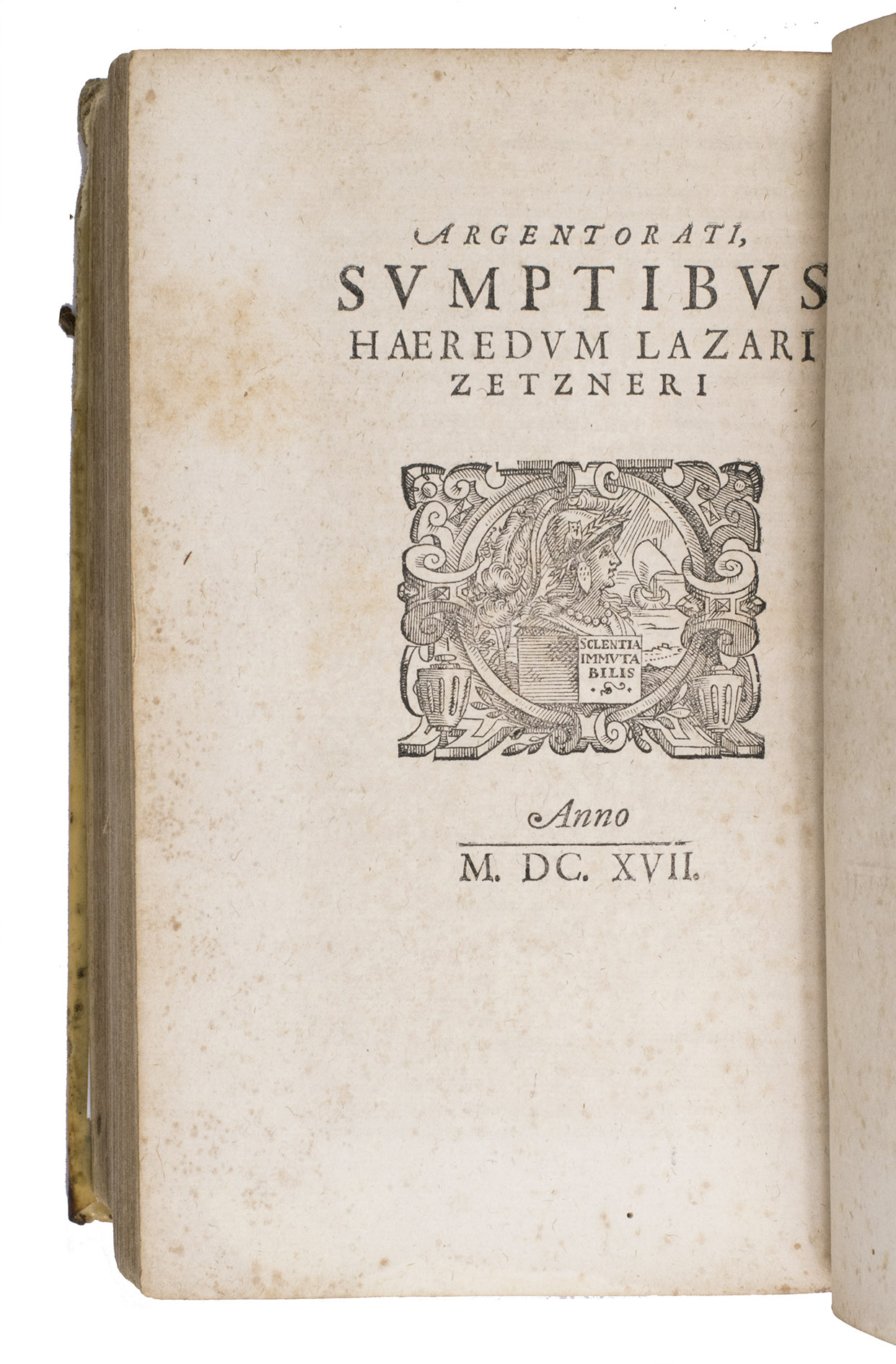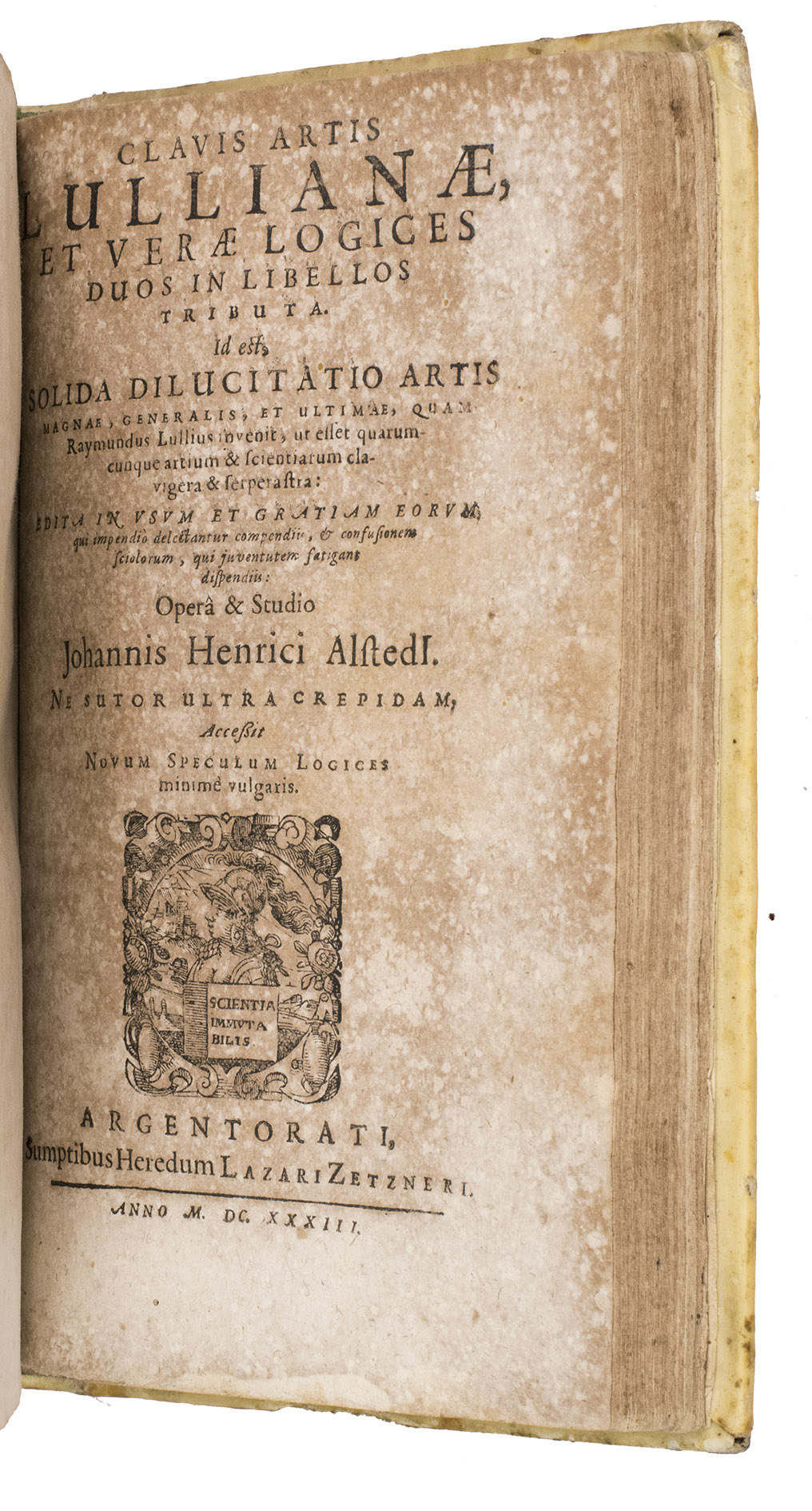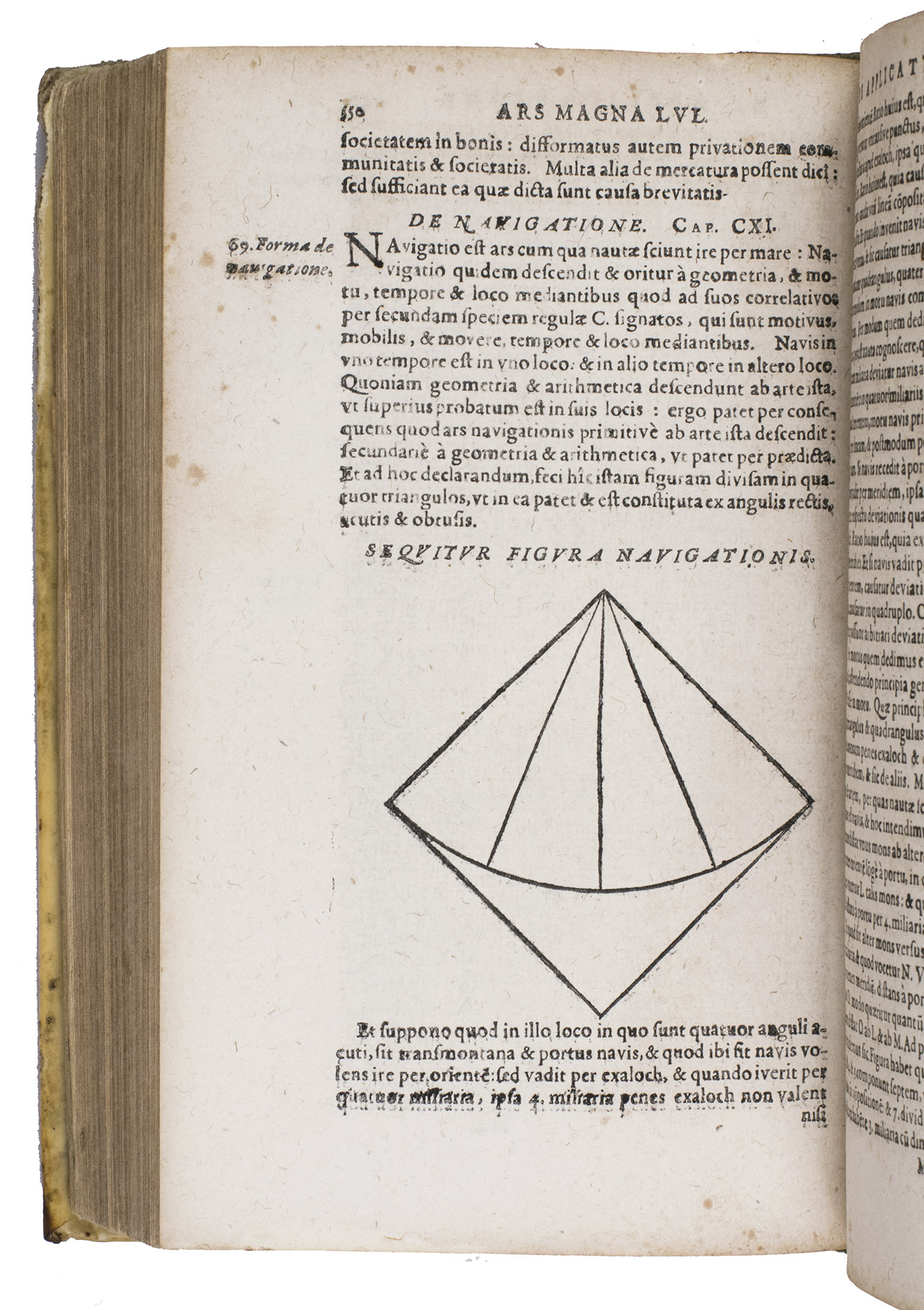LULL, Ramon.
Opera ea quae ad adinventam ab ipso artem universalem, scientiarum artium que omnium brevi compendio, firmaq[ue] menmoria apprehendendarum, locupletissimaq[ue] vel oratione ex tempore pertractandarum, pertinent.
Strasbourg, sold by the heirs of Lazarus Zetzner, 1617.
With:
(2) ALSTED, Johann Heinrich. Clavis artis Lullianae, et verae logices ...
Strasbourg, sold by the heirs of Lazarus Zetzner, 1633.
2 works in 1 volume. 8vo. With 3 folding letterpress tables, numerous woodcut diagrams in the text, a decorated woodcut initial at the start of each chapter, and a woodcut printer's device on the title-page. Contemporary vellum, sewn on 5 supports laced through the joints, with the manuscript title on the spine. [16], 1109, [39], [2 blank]; [8], 182; [1], [1 blank] pp.
€ 3,500
Scarce edition of the first Latin compilation of the works of Ramon Lull (ca. 1232-1315), together with the most important commentaries on his ideas. This compilation was almost solely responsible for the spread of Lullism in the Early Modern period, and it directly influenced significant thinkers such as Gottfried Wilhelm Leibniz (1646-1716), who was known to own a copy. The present edition rarely appears on the market.
The Ars is included here as Ars brevis, the shortened and most widely read version. It explains Lull's system of universal logic, which could be used to prove the truth of Christian doctrine. The work was meant as a method for the conversion of non-believers, as Lull had found that other methods used at the time mostly lead to endless discussions and therefore did not have the desired effect. Instead, he formulated a series of general principles, which were the principles that all three Abrahamic religions agreed on, like the existence of a just and good God. He then devised a method for combining these principles to show which combinations were concordant with or contrary to one another. To do this, he made liberal use of figures. The first figure in the present work, for example, represents the nine fundamental principles of the art (goodness, power, truth etc.) with letters. These letters are combined in different ways in the other figures to show how other concepts can be formed. Together with the text, this should help the reader to create convincing arguments.
Other than Ars brevis, the compilation includes De auditu Kabbalistico seu Kabbala, Duodecim principia Philosophiae Lullianae, Dialectica seu Logica, Rhetorica, and Ars Magna. Added are the commentaries by Giordano Bruno and Agrippa. The work is then closed with Lull's Articuli fidei. The second work in this volume, which is commonly included, was written by Johann Heinrich Alsted (1588-1638), who was the initiator for the present compilation. Alsted was an early "encyclopaedist" and a student of Lullism. In his work, here included in its second edition, he explains Lull's ideas further.
With a contemporary annotation at the head of the front board and another (in the same hand?) on the title-page, a large book plate is mounted on the front pastedown. The edges and corners of the boards are scuffed and the vellum is somewhat stained. The work is somewhat browned throughout, with some leaves affected more than others, especially in ad 2, the outer margins of the first and last few leaves have been restored, minor wormholes in the lower margin of page 957 of ad 1 until the end of ad 2, not affecting the text. Otherwise in good condition. Ad 1: Palau 143678; USTC 2135618; VD17 23:287653F; cf. Brüning 0716 (other ed.); Duveen 371 (other ed.); Thorndike II, pp. 862-873; Ad 2: USTC 2048079; VD17 23:287663N.
Related Subjects:
